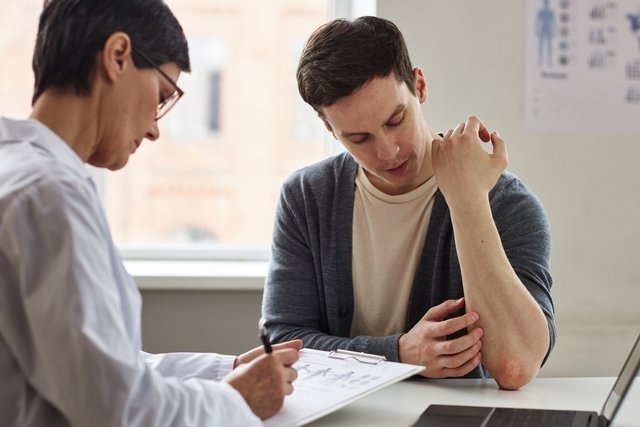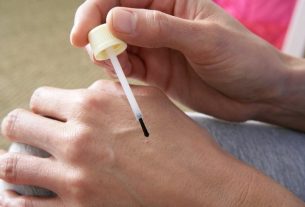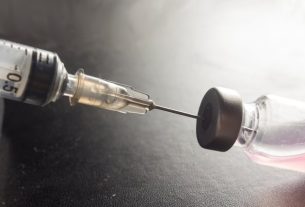The symptoms of psoriasis may vary slightly according to the type of psoriasis, with the appearance of red, scaly spots or plaques on the skin, anywhere on the body, being more common on the elbows, knees or scalp.
Psoriasis symptoms may disappear spontaneously, without the need for treatment. However, these symptoms can also appear with greater intensity in periods of weakening of the immune system, as happens during periods of stress or flu, for example.
Psoriasis is an inflammatory skin disease that must be identified and treated according to the dermatologist’s guidance. Learn more about psoriasis.
Main symptoms
The main symptoms of psoriasis are:
- Red spots or plaques on the skin;
- Peeling of the skin;
- Dry and cracked skin, which can sometimes bleed;
- Itching at the location of the spots;
- Burning sensation in the region;
- Pain in the region, in some cases;
- Change in the shape and texture of the hands;
- Fever, in some types of psoriasis;
- Pain, stiffness and swelling in the joints in some cases.
The symptoms of psoriasis can vary according to the type of disease, and it is important to consult a dermatologist so that an evaluation can be carried out, a diagnosis made and the most appropriate treatment initiated.
Book an appointment with your nearest dermatologist using the tool below to investigate the type of dermatologist:
Taking care of your health has never been easier!
Symptoms by type of psoriasis
Depending on the type of psoriasis, symptoms and characteristics may vary slightly:
1. Psoriasis vulgaris
Sensitive content
This image may contain content that is uncomfortable for some people.

It is the most common type of psoriasis and is characterized by the presence of lesions of varying sizes that generally appear on the scalp, knees and elbows. These lesions are red and well-defined, are normally covered with white scales, can be very itchy and, in some cases, can also bleed.
2. Guttate psoriasis
Sensitive content
This image may contain content that is uncomfortable for some people.

This type of psoriasis is more common to be identified in children and is characterized by the presence of small drop-shaped lesions on the skin, mainly on the trunk, arms and thighs, and is most often associated with infection by bacteria of the genus Streptococcus.
3. Arthropathic psoriasis or psoriatic arthritis
Sensitive content
This image may contain content that is uncomfortable for some people.

In this type of psoriasis, in addition to the appearance of the red, scaly plaques characteristic of the disease, the joints also become quite painful. This type of psoriasis can affect everything from the fingertips to the knee joints.
4. Pustular psoriasis
Sensitive content
This image may contain content that is uncomfortable for some people.
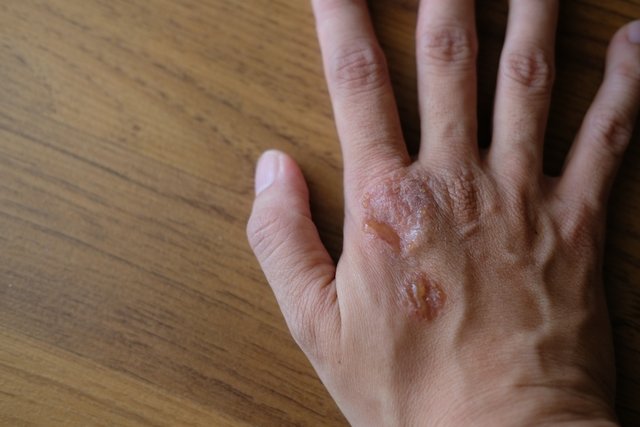
Pustular psoriasis is uncommon and is characterized by the presence of pus-filled lesions spread across the body or hands. In this type of psoriasis, other symptoms can also be observed, such as fever, chills, itching and diarrhea, for example.
5. Nail psoriasis
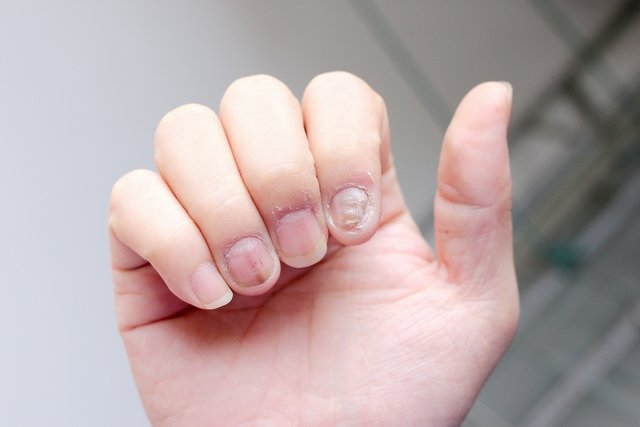
In this type of psoriasis, yellowish spots or changes in the shape and texture of the fingernails can be observed, which can even be confused with ringworm.
6. Scalp psoriasis
Sensitive content
This image may contain content that is uncomfortable for some people.

Symptoms of scalp psoriasis usually appear during periods of stress, being characterized by the presence of thick white scales adhered to the scalp, around the hair follicles. In addition, there is redness in the affected region and a decrease in the amount of hair in the region.
Psoriasis in children
The symptoms of psoriasis in children and adolescents are the same as in adults, but in very young children there may be some changes. In children up to 2 years of age, psoriasis manifests itself especially in the diaper region, being similar to diaper erythema (diaper rash), but in childhood psoriasis, which is normally of the guttate psoriasis type, there is:
- Slight redness of the affected area, with a slightly bright tone, with well-defined edges;
- Also affecting the inguinal folds;
- There may or may not be associated itching.
After about 2 weeks of the appearance of this lesion, it is common for the same lesions as psoriasis to appear on the face, scalp, trunk or limbs. Find out everything about guttate psoriasis.
Essential treatment and care
Treatment for psoriasis is carried out in order to control its symptoms, and must be carried out according to the dermatologist’s instructions. Treatment usually involves the use of medications in the form of tablets and ointments, as well as hygiene and skin hydration measures.
It is also important to pay attention to your diet, giving preference to foods that are antioxidants and capable of keeping your skin hydrated. Watch the video and learn how to always have beautiful, hydrated skin:
Bibliography
- MAYO CLINIC. Psoriasis. Disponível em: <https://www.mayoclinic.org/diseases-conditions/psoriasis/symptoms-causes/syc-20355840>. Acesso em 30 out 2019
- NATIONAL PSORIASIS FOUNDATION. About psoriasis. Available at: <https://www.psoriasis.org/about-psoriasis>. Accessed on October 30, 2019
- NHS. Psoriasis. Available at: <https://www.nhs.uk/conditions/psoriasis/symptoms/>. Accessed on October 30, 2019

Sign up for our newsletter and stay up to date with exclusive news
that can transform your routine!
Warning: Undefined array key "title" in /home/storelat/public_html/wp-content/plugins/link-whisper-premium/templates/frontend/related-posts.php on line 12
Warning: Undefined array key "title_tag" in /home/storelat/public_html/wp-content/plugins/link-whisper-premium/templates/frontend/related-posts.php on line 13

